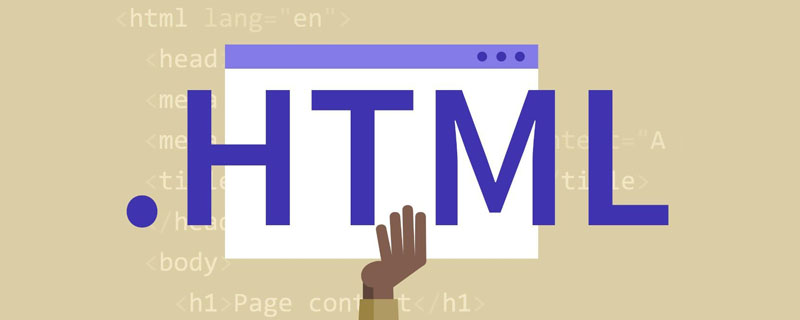HTML5 has newly added the management of history, and updated the history object to make it more convenient to manage historical status. In modern web applications, users can switch history pages through the "forward" and "back" buttons. This allows some new pages that are not opened in new pages to move forward and back freely, improving user experience.
Through the haschange event, you can know when the parameters of the URL have changed, that is, when you should react. Through the state management API, the browser URL can be changed without loading a new page. So you need to use the history.pushState() method. The history.pushState() method receives three parameters: 1. Content to be stored 2. Title (usually an empty string) 3. Address (optional). A small example is as follows
JavaScript code##
history.pushState({name: "menglong"}, '', "li.html"); Executed history.pushState () method, the new status information will be added to the historical status stack, and the browser address bar will become the new relative URL. However, the browser does not send a request to the server, and even if the new location.href is checked after the historical status changes, the same address as in the address bar will be returned. In addition, the second parameter is not currently implemented by browsers, so you can just pass in an empty string, or a short title. The first parameter should provide as much information as possible to initialize the page state. Because the history.pushState() method creates a new historical state, you will find that the "Back" button can also be used. Pressing the "Back" button will trigger the popstate event of the window object. The event object of the Popstate event has a state property, which contains the state object originally passed to pushState() as the first parameter. A small example is as follows
JavaScript code##window.addEventListener('popstate',function(ev){
var state = event.state;
if(state){ // 当第一个页面加载的时候state为空
processState(state)
}
}, false); Got this status Object, you must reset the page to the state represented by the data in the state object (because the browser will not do this for you automatically). Remember, the first page loaded by the browser has no state, so when "back" Aniu returns to the first page loaded by the browser, the event.state value is null.
To update the current historical state, you can call replaceState(), and the parameters passed in are the same as the first two parameters of the pushState() method. Calling replaceState() will not create a new state in the historical state stack, it will only overwrite the current state. A small example is as follows
JavaScript codehistory.replaveState({name: "meng"}, "meng1234");When using the historical state management mechanism of HTML5, you need to make sure to use Every "fake" URL created by pushState() has a real, actual URL corresponding to it on the web server. Otherwise, the stand-alone "Refresh" button will result in a 404 error.
Browsers that support HTML5 history state management include Chrome, Safari 5+, Firefox 4+ and Opera 11.5+. In Safari and Chrome, the state object passed to pushState() or replaceState() cannot contain DOM elements. Firefox supports including DOM elements in state objects. Opera also supports a history.state property, which returns a state object for the current state. The following is time for small examples. Only by combining small examples can we better understand the history management in HTML5.
Add href value to achieve history management
HTML code <input type="button" value="35选7" id="input1" />
<p id="p1"></p>
JavaScript code//onhashchange : 事件 : 当hash值改变的时候触发的事件
//hash改变就会出现就会出现历史管理
window.onload = function(){
var oInput = document.getElementById('input1');
var op = document.getElementById('p1');
var obj = {};
oInput.onclick = function(){
var number = randomNum(35,7);
op.innerHTML = number;
var oRN = Math.random();
obj[oRN] = number;
window.location.hash = oRN;
};
window.onhashchange = function(){
var number = obj[window.location.hash.substring(1)] || '';
op.innerHTML = number;
};
function randomNum(alls,now){
var arr = [];
var newArr = [];
for(var i=1;i<=alls;i++){
arr.push(i);
}
for(var i=0;i<now;i++){
newArr.push( arr.splice( Math.floor(Math.random()*arr.length) ,1 ) );
}
return newArr;
}
};
Passed History object in HTML5 implements history management##
HTML code<input type="button" value="35选7" id="input1" />
<p id="p1"></p>
JavaScript code//pushState : 三个参数:1.要存的内容 2.标题(一般写个空的字符串) 3.地址(可选)
//history.pushState({name: "menglong"}, '', "li.html");
window.onload = function(){
var oInput = document.getElementById('input1');
var op = document.getElementById('p1');
var iNow = 0;
oInput.onclick = function(){
var number = randomNum(35,7);
op.innerHTML = number;
history.pushState(number,'',iNow++);
};
window.onpopstate = function(ev){ //历史管理改变,就会触发
var number = ev.state || '';
op.innerHTML = number;
};
function randomNum(alls,now){
var arr = [];
var newArr = [];
for(var i=1;i<=alls;i++){
arr.push(i);
}
for(var i=0;iThe above is the content of HTML5 actual combat and analysis of history management (history object). For more related content, please pay attention to the PHP Chinese website (www .php.cn)!
 html5的div一行可以放两个吗Apr 25, 2022 pm 05:32 PM
html5的div一行可以放两个吗Apr 25, 2022 pm 05:32 PMhtml5的div元素默认一行不可以放两个。div是一个块级元素,一个元素会独占一行,两个div默认无法在同一行显示;但可以通过给div元素添加“display:inline;”样式,将其转为行内元素,就可以实现多个div在同一行显示了。
 html5中列表和表格的区别是什么Apr 28, 2022 pm 01:58 PM
html5中列表和表格的区别是什么Apr 28, 2022 pm 01:58 PMhtml5中列表和表格的区别:1、表格主要是用于显示数据的,而列表主要是用于给数据进行布局;2、表格是使用table标签配合tr、td、th等标签进行定义的,列表是利用li标签配合ol、ul等标签进行定义的。
 html5怎么让头和尾固定不动Apr 25, 2022 pm 02:30 PM
html5怎么让头和尾固定不动Apr 25, 2022 pm 02:30 PM固定方法:1、使用header标签定义文档头部内容,并添加“position:fixed;top:0;”样式让其固定不动;2、使用footer标签定义尾部内容,并添加“position: fixed;bottom: 0;”样式让其固定不动。
 HTML5中画布标签是什么May 18, 2022 pm 04:55 PM
HTML5中画布标签是什么May 18, 2022 pm 04:55 PMHTML5中画布标签是“<canvas>”。canvas标签用于图形的绘制,它只是一个矩形的图形容器,绘制图形必须通过脚本(通常是JavaScript)来完成;开发者可利用多种js方法来在canvas中绘制路径、盒、圆、字符以及添加图像等。
 html5中不支持的标签有哪些Mar 17, 2022 pm 05:43 PM
html5中不支持的标签有哪些Mar 17, 2022 pm 05:43 PMhtml5中不支持的标签有:1、acronym,用于定义首字母缩写,可用abbr替代;2、basefont,可利用css样式替代;3、applet,可用object替代;4、dir,定义目录列表,可用ul替代;5、big,定义大号文本等等。
 html5废弃了哪个列表标签Jun 01, 2022 pm 06:32 PM
html5废弃了哪个列表标签Jun 01, 2022 pm 06:32 PMhtml5废弃了dir列表标签。dir标签被用来定义目录列表,一般和li标签配合使用,在dir标签对中通过li标签来设置列表项,语法“<dir><li>列表项值</li>...</dir>”。HTML5已经不支持dir,可使用ul标签取代。
 html5是什么意思Apr 26, 2021 pm 03:02 PM
html5是什么意思Apr 26, 2021 pm 03:02 PMhtml5是指超文本标记语言(HTML)的第五次重大修改,即第5代HTML。HTML5是Web中核心语言HTML的规范,用户使用任何手段进行网页浏览时看到的内容原本都是HTML格式的,在浏览器中通过一些技术处理将其转换成为了可识别的信息。HTML5由不同的技术构成,其在互联网中得到了非常广泛的应用,提供更多增强网络应用的标准机。
 Html5怎么取消td边框May 18, 2022 pm 06:57 PM
Html5怎么取消td边框May 18, 2022 pm 06:57 PM3种取消方法:1、给td元素添加“border:none”无边框样式即可,语法“td{border:none}”。2、给td元素添加“border:0”样式,语法“td{border:0;}”,将td边框的宽度设置为0即可。3、给td元素添加“border:transparent”样式,语法“td{border:transparent;}”,将td边框的颜色设置为透明即可。


Hot AI Tools

Undresser.AI Undress
AI-powered app for creating realistic nude photos

AI Clothes Remover
Online AI tool for removing clothes from photos.

Undress AI Tool
Undress images for free

Clothoff.io
AI clothes remover

AI Hentai Generator
Generate AI Hentai for free.

Hot Article

Hot Tools

ZendStudio 13.5.1 Mac
Powerful PHP integrated development environment

SAP NetWeaver Server Adapter for Eclipse
Integrate Eclipse with SAP NetWeaver application server.

EditPlus Chinese cracked version
Small size, syntax highlighting, does not support code prompt function

DVWA
Damn Vulnerable Web App (DVWA) is a PHP/MySQL web application that is very vulnerable. Its main goals are to be an aid for security professionals to test their skills and tools in a legal environment, to help web developers better understand the process of securing web applications, and to help teachers/students teach/learn in a classroom environment Web application security. The goal of DVWA is to practice some of the most common web vulnerabilities through a simple and straightforward interface, with varying degrees of difficulty. Please note that this software

Atom editor mac version download
The most popular open source editor






